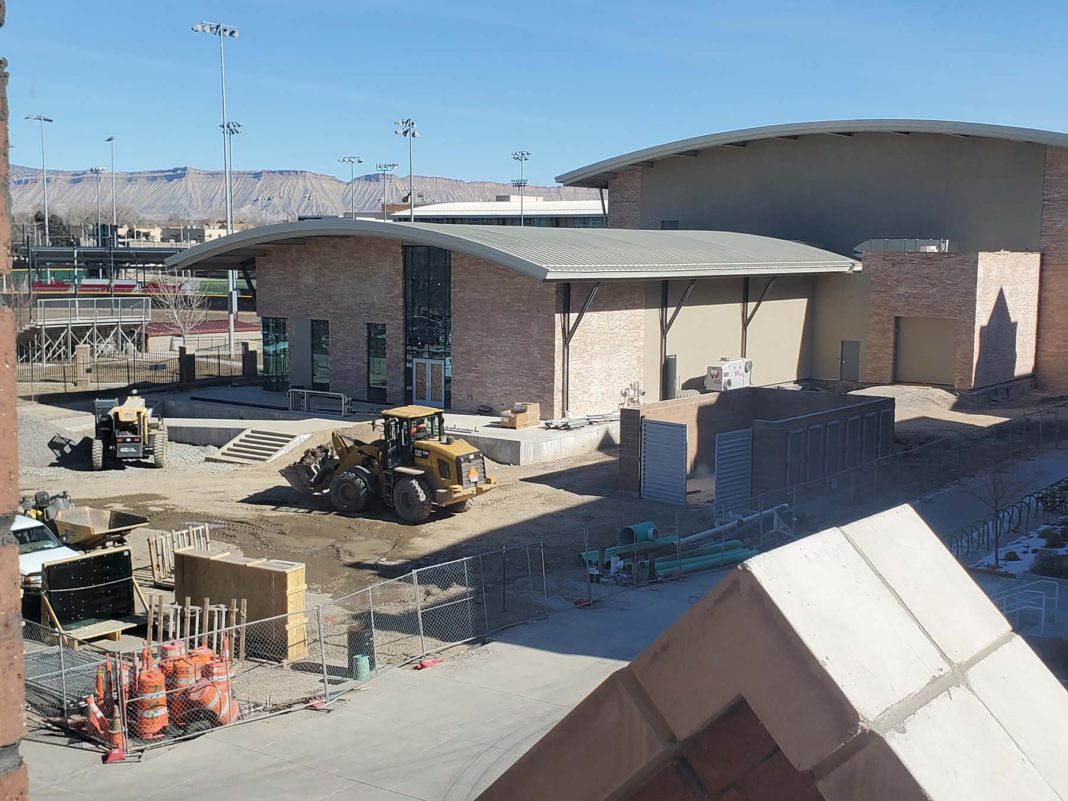For many students and Grand Junction residents who use the Maverick Center gym, they feel like its renovations and construction have been perpetual and seemingly unable to make significant progress. This feeling was solidified in recent weeks, when the news came of another hindrance in the construction’s process that has led to another delay. This recent delay was brought along by a universal shortage and delay in heating, ventilation and air conditioning (HVAC) equipment units.
Construction projects as involved as the current addition of the Field House to the Maverick Center, require a chain of administrators and suppliers that revolve around one another and rely on efficiency and intelligent time management. When a delay is thrown into a major piece of equipment’s supply chain, it throws off the timeline of the project as HVAC installation must be done before the building’s interior can be completed.
Colorado Mesa University (CMU) Vice President of Marketing and Communications David Ludlam attributed new efficiency standards from the U.S. Department of Energy as a major reason for the delay in HVAC equipment.
“These [efficiency standards] went into effect Jan. 1. While there are likely numerous reasons for the delay in original equipment manufacturing deliveries around the nation to HVAC, one dynamic includes manufacturers having to retool their facilities to meet new standards,” Ludlam said. “This was communicated to CMU as one of the variables that affected delivery schedules.”
The HVAC components necessary to continue construction are the rooftop heating and cooling units, which must be installed before workers in the Maverick Center can continue to progress on the lengthy and costly project. CMU President John Marshall spoke on the delays, as well as the massive amount of money the school has funneled into the new facility being constructed.
“The rooftop HVAC units are a huge element of the $23 million facility. They were supposed to be here in October, and they’re still not here. So, we can’t install the wood floors and finish the building until we have the permanent heating and cooling fixtures there,” Marshall said.
Marshall’s claim that the HVAC units were meant to be delivered in Oct. contributes some confusion to Ludlam’s statements that the delay was mainly caused by the U.S. Department of Energy’s new efficiency standards that went into effect at the beginning of this year, as the origin of these HVAC delays becomes a bit blurred.
Ludlam provided the information that a company called Trane has been the HVAC supplier for this new facility project. The Criterion reached out to Trane for a comment on these delays and shortages, but did not get a response.
The Field House annexation was planned to be open for student use by the first day of Spring 2023 classes.
“It’s costing us money, it’s costing local contractors money, and it’s costing students because you can’t use the facility yet, which you should have been able to do starting yesterday,” Marshall said. “This incredibly long process of construction has been a burden for many students who frequent the gym and take advantage of the facilities.”
Many Mavs using the gym expressed this exact sentiment with details of how the construction has impacted them.
“It was just tough how busy it made the gym feel for a very long time, while some of the main sections of the gym were blocked off,” junior in kinesiology: health and fitness promotion and player for CMU’s hockey team Eli Wilson said.
Ludlam says the new, tentative plan is to finish the project by mid to late March. Although, this is assuming that the HVAC delay, as well as Trane manufacturing, can get their products approved by the new energy efficiency standards and get their delivery schedules back on track.




